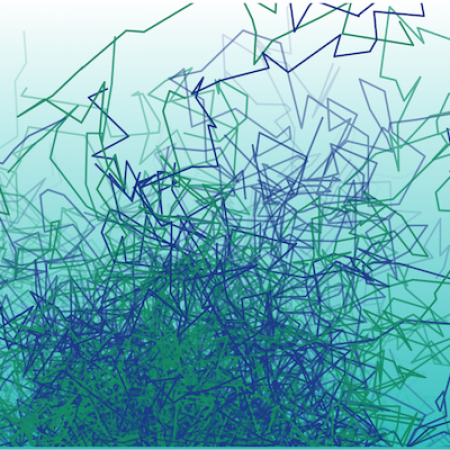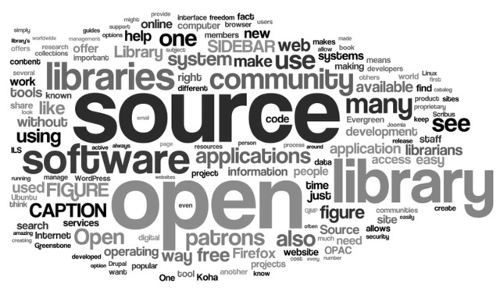/ BLOG
Open Source Software for bridge design.
The WSDOT Bridge and Structures Office is developing bridge engineering software tools that they share with the community through the Alternate Route Open Source License. I like pretty much the name of the project and I can't resist to reproduce here the reasons why they choose this name:
«The name chosen for this project, Alternate Route, is meant to convey several messages. Every night when I drive home from work, I hear the traffic reporter on the radio suggest alternate routes to avoid traffic snarls. The alternate route is a path that avoids obstacles. People often take the scenic route when vacationing. This alternate route may not be the most direct path to their destination, but it is a route they enjoy traveling. When you reach a fork in the road you have to choose which way to go. You can go left, you can go right, or you can stray from the beaten path. The choice is yours. Open Source Software is very similar to the alternate routes we encounter every day. It avoids the obstacles created by closed software systems. It is a different way of creating software products that some developers enjoy. But most importantly, it preserves the freedom to choose how you will use, adapt, and share software»
If you want to take a look, you can follow the link:
Alternate Route ProjectCourse: Using Python for Research.
The Harvard online course «Using Python for Research» has just started on the proposition «Take your introductory knowledge of Python programming to the next level and learn how to use Python 3 for your research». It's a good opportunity to learn about tools we use in XC, like NumPy, SciPy and Matplotlib modules.
Go to the courseModelling structures in fire.
Various thermal models are currently being developed at the University of Edinburgh to provide OpenSees with the capacity to model diverse structures in several different fire benchmark problems and reproduce the same results as other commercially available software packages.
Maybe some interested reader can help us to implement these capabilities into XC. The source code for this project is hosted in GitHub.
OpenSees for fireImplementation of a tension-stiffening model for the cracking nonlinear analysis of reinforced concrete elements in XC.
The development of a smeared-crack model offers a general crack-modeling method that is independent of the structural configuration. It treats cracking as a constitutive material behaviour rather than a geometric discontinuity and lends itself well to implementation in large finite element codes.
This paper deals with the implementation in XC of a constitutive model for reinforced concrete elements that takes into account the increase in stiffness of a cracked member due to the development of tensile stresses in the concrete between the cracks, effect known as tension-stiffening. The nonlinear analysis in XC of fiber-like sections with this constitutive model allows for a more general, direct and intuitive evaluation of the crack amplitude than applying the mostly specific formulae developed in the standards. The numerical results obtained by the program compare extremely well with existing designing results issued by other applied methods. [pdf] Read the paperImplementation of interaction diagrams in XC
XC has taken from OpenSees the implementation of fiber models for the analysis of cross-sections under normal stresses. This is the backbone around which the program carries out the structural verification according to different standards.
In this paper we describe the procedure followed to implement in XC the generation of 3D interaction diagrams for reinforced concrete sections. A more general, but also more time-consuming process and not so straight-converging analysis is outlined for generating the interaction diagram of generic sections made up of any materials combination.
A practical example is provided in the last section of the document.
One year ago, I joined the crew.
I certainly not had read the recent article Hacking structural analysis. Join the crew on the open source finite element software XC but I had witnessed the birth, the many births, of the program.
All the huge code was written in the powerful but tough C++, that hardly invited to get one's teeth into it. Over the last two years, those C++ classes have been exposed to Python, which makes it quick to provide additional functionality without modifying the core system and also, I might add, saves much mental overhead. On top of that, it allows you to take advantage of the wonderful scientific and technical libraries developed by the Python community, like NumPy, SciPy and many others.
This article talks about the benefits of becoming a co-developer, that, as typical with some important things in life, can't be measured or quantified.
[pdf] Read the articleOpen source software and structural engineering
Nowadays, business models, constantly disrupted by the new thecnologies from the Fourth Industrial Revolution, are in permanent debate. Last January the World Economic Forum published the document «The Future of Jobs» that aims to draw a landscape of this transformative moment in order to anticipate and proactively manage the current transition in labour markets.
It seems very clear that creativity and «human touch» will be essential components of those jobs that are not to be replaced by robots, artificial intelligence or machine learning. In this regard, we think that Open Software is the best ally for the structural engineer.
Open Software provides the designer with unlimited freedom to take the control of the design process and to customize procedures. In propietary software, only its original authors are allowed to copy or modify the code, which limites the freedom of designing with user-defined algotithms. It is quite normal today to use programs for structural design that steer the engineer to much, leading to solutions purely formalistic, in opposition to the challenging to design creatively, without following predefined procedures.
To the extent that we accept this reality as part of the natural order of things, we are part of the problem, so we ought to be part of the solution.
MIT video lectures on finite elements.
Professor Bathe is considered one of the pioneers of finite element analysis and its applications; he is also the initiator of the ADINA system development.
His books have provided us with knowledge, inspiration and motivation for the development of the XC finite element OSS.
It's a delight to have the opportunity of watching his MIT video lectures.
Bathe MIT FE Procedures for Solids and Structures. Nonlinear AnalysisHacking structural analysis. Join the crew.
For structural engineers, computing is (or must be) just another discipline (like mathematics, physics or geotechnics). Implementation of structural analysis programs as practical applications of computing must not be beyond our reach.
Rise of free and open source (FOSS) sofware allow engineering community to develop its own applications (and regain leadership over their discipline) without having to reinvent the wheel.
[pdf] Read the article.






